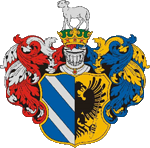The city stretches along the banks of the Tisza and at the confluence of the Maros. Because of its advantageous situation, it played an important role in the transportation and distribution of the salt mined in Transylvania in the ancient times. The city is first mentioned by a royal charter originating from 1183. Its medieval development was halted by the Tartar invasion then later by the Ottoman rule. The Great Flood of 12th March 1879 devastated the settlement by ruining most of its buildings. The post-flood reconstruction determined Szeged’s present-day urban character by creating a layout of boulevards and avenues and by building impressive palaces. Thanks to the large scale constructions in the prevailing Eclectic style, the city had been reborn by the late-19th century, and was enriched with true gems in the form of Art Nouveau palaces at the beginning of the 20th century.
Hungary-Serbia IPA Cross-border Co-operation Programme >> http://www.hu-srb-ipa.com





